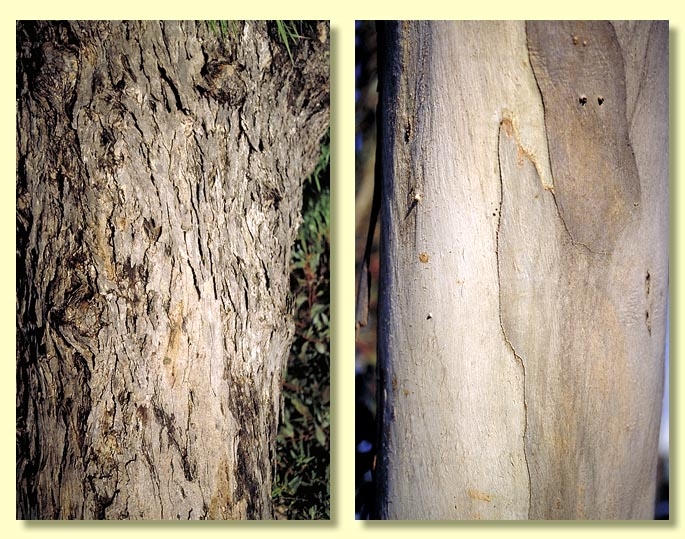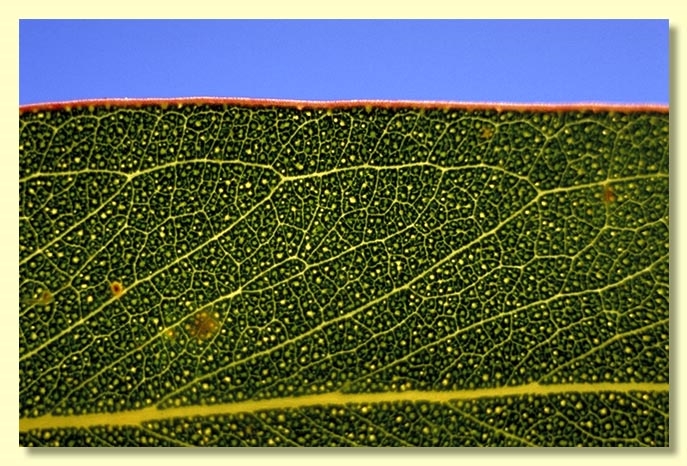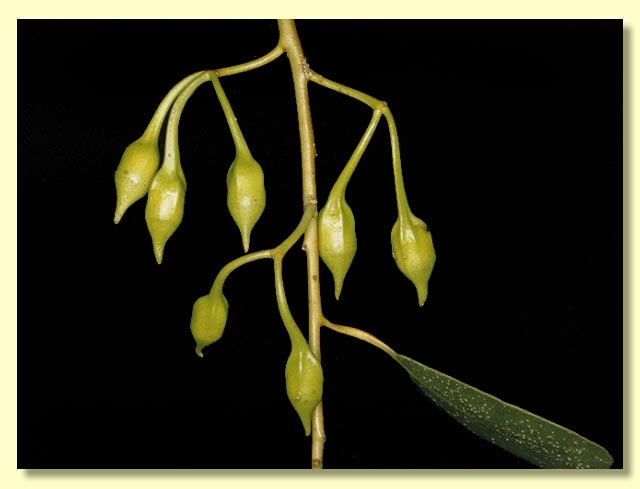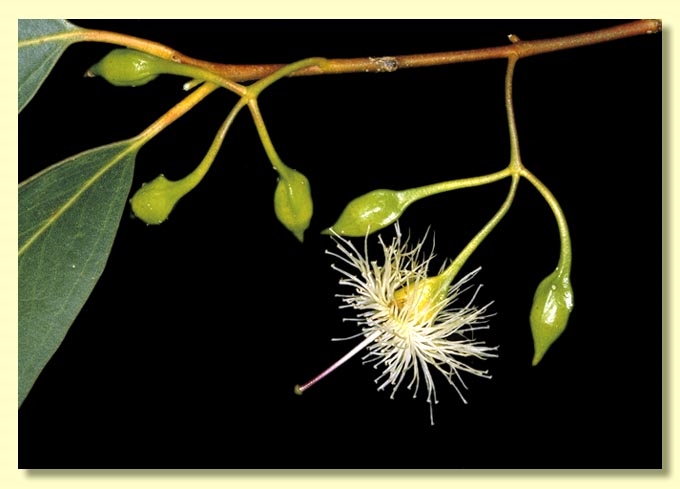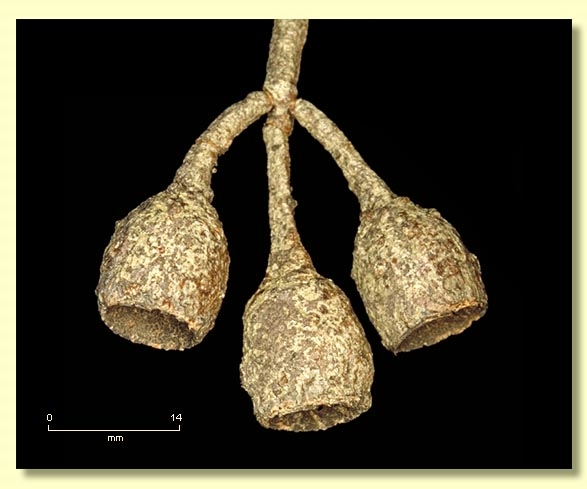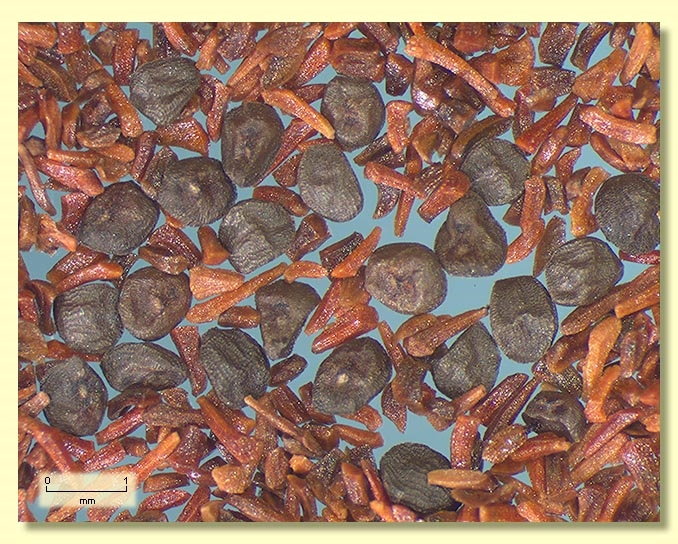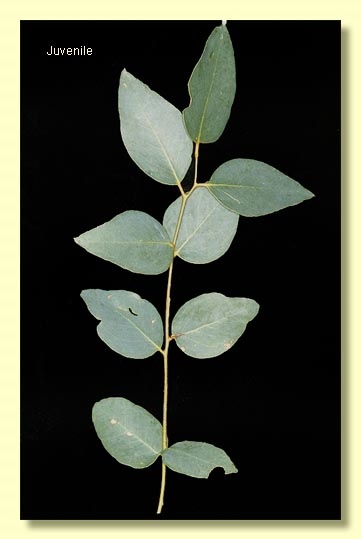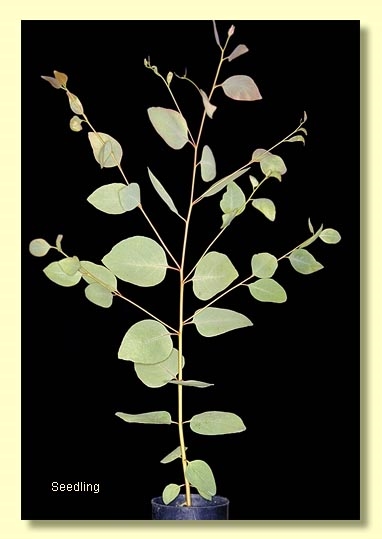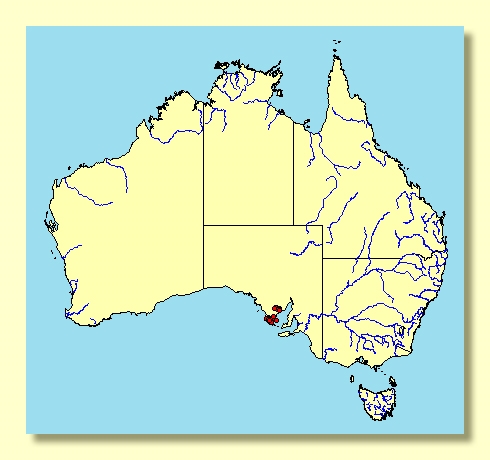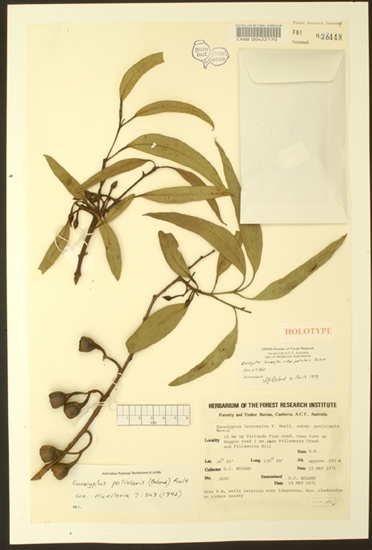Euclid - Online edition
Eucalyptus petiolaris
Eucalyptus | Symphyomyrtus | Adnataria | Terminales | Melliodorae | Leucoxylon
Trees to 15 m tall. Forming a lignotuber.
Bark partly or wholly rough on trunk, sometimes extending to base of larger limbs, grey-brown to yellow-brown persistent flakes, smooth above pale grey, dark grey and yellowish cream.
Juvenile growth (coppice or wild seedling to 50 cm tall): stems rounded in cross-section; juvenile leaves always shortly petiolate, opposite for a few nodes then alternate, ovate, 6–9 cm long, 3.8–6.8 cm wide, base truncate or rounded, dull, grey-green to green.
Adult leaves alternate, petioles 1.2–2.7 cm long; blade lanceolate to falcate, (6.5)8.5–15(17.5) cm long, (0.9)1.2–2.5 cm wide, base tapering to petiole, concolorous, slightly glossy, green, side-veins at an acute or wider angle to midrib, reticulation dense to very dense, intramarginal vein remote from margin, oil glands intersectional.
Inflorescence axillary unbranched, pendulous, peduncles 0.9–2.2 cm long, buds 3 per umbel, pedicels 0.6–1.7 cm long. Mature buds ovoid to cylindrical, 1.1–1.7 cm long, 0.7–1 cm wide, ridges often conspicuous at base of hypanthium, scar absent (both opercula shed together), stamens inflexed, staminodes present, anthers oblong to wedge-shaped, adnate to and obliquely placed on filament tips, dehiscing by terminal pores, style long with base seemingly inserted in a pit, stigma pin-head, ovary roof with several protruberances adjacent to base of style, locules 6 or 7, the placentae each with 4 vertical ovule rows (rarely 6 rows). Flowers white to pink and brilliant red.
Fruit pendulous, pedicels 0.7–2 cm long, cupular to barrel-shaped, 1.1–1.7 cm long, 1–1.5 cm wide, occasionally slightly ridged basally, disc descending with several protruberances towards the centre, valves 6 or 7, enclosed.
Seeds brown to grey-brown, 1–2 mm long, ovoid to flattened-ovoid, dorsal surface shallowly reticulate, hilum ventral.
Cultivated seedlings (measured at node 10): cotyledons reniform to bilobed; stems rounded in cross-section; leaves always petiolate, opposite for 5 to 10 nodes then alternate, ovate to deltoid, 4–8 cm long, 2.5–4.5 cm wide, dull, greyish green to green.
Flowering has been recorded in January, August, September, October and November.
A small to medium-sized tree endemic to South Australia where found on southern Eyre Peninsula, mainly in the Koppio Hills, and further north around Cleve, Darke Peak and Caralue, usually in valleys or on flat country near water. The bark is rough and loosely flaky near the base or wholly smooth and the adult leaves are slightly glossy, green to dark green. The flowers are sometimes reddish.
E. petiolaris was originally recognised as a subspecies of E. leucoxylon because of the petiolate seedling and juvenile leaves, and later raised to species rank. The four subspecies of E. leucoxylon all have the early seedling and juvenile leaves sessile.
Eucalyptus petiolaris belongs in Eucalyptus subgenus Symphyomyrtus section Adnataria because the buds have two opercula, ovules are in four rows, seeds are flattened-ovoid, cotyledons are reniform, and anthers are rigid on the staminal filaments. Within section Adnataria, E. petiolaris is part of a small subgroup, series Melliodorae, further characterised by having buds in axillary clusters, the outer operculum being retained until flowering when both opercula are shed together, and the flowers having outer stamens that are sterile whilst inner stamens are fertile, and a broad staminal ring that can often be seen on the fuit but ultimately is deciduous. Other species in series Melliodorae are the box-barked E. melliodora, which is widespread from the Consuelo Tableland in central Queensland through eastern New South Wales and Victoria as far as the Grampians; the smooth-barked E. leucoxylon mentioned above; and the two ironbarks, E. sideroxylon and E. tricarpa, from New South Wales and Victoria.


